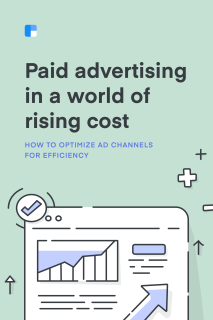Chapter 4
7 minutes
Activating your ICP for ads
It’s becoming more difficult to target on ad platforms, but there’s a way around it: you can design your own targeting logic and bring it into ad platforms so that you’re repeatedly, reliably focusing on only the prospects that will bring you efficient revenue growth.
At Clearbit, we describe this effort with the phrase “activate your ideal customer profile (ICP).” The idea is to find out which of your current customers create the most value for your business (your ICP), then focus your energy and budget on acquiring more customers like them to increase revenue in a cost-effective way.
Your ICP is a north star for the entire company to orient around, aligning paid ads with sales efforts so that these activities are tightly coordinated along the revenue chain, from top to bottom.
We’ll show you how to reverse-engineer your ICP using firmographic and technographic data, then how to segment it into multiple buyer personas so you can tailor your ads to resonate with more people who work at your ICP companies.
This step is critical, according to Jonathan Bland, cofounder of demand agency Omni Lab.
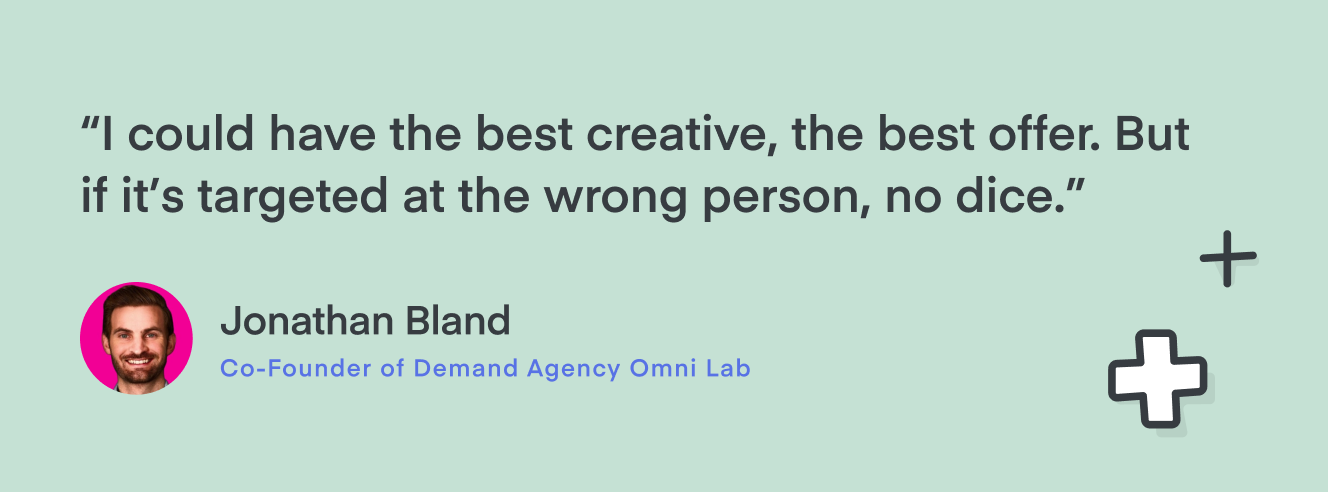
Common targeting issues
Even though targeting is marketing strategy 101, we all have some room for improvement. “My team has seen over a hundred different companies’ ad accounts,” Jonathan says, “and people are crazy unfocused with targeting.”
Poor targeting can appear in many forms:
- It’s too broad.
- It’s not focused on the same types of accounts pursued by the sales team (or a companywide ICP).
- There’s an ICP, but there are no segments within it, so ads can’t deliver specific messages to specific groups.
- Ads only target decision-makers, neglecting the end-users who are likely to need your product and who will escalate it to buyers (see users are not buyers).
- Insufficient exclusion criteria, so that ads are shown to the wrong audiences, including competitors, captured leads, and current customers.
It’s also possible to go too narrow with targeting, which throws CPMs through the roof. You need to find the sweet spot in terms of audience size, and this takes experimentation.
Ad platforms generally do not, on their own, provide an environment where B2B companies can do super accurate targeting in a reliable and consistent way, especially with the recent changes in privacy regulations and buyer behavior. This is why it’s important to BYOD: Bring Your Own Data. B2B marketers are supplementing ad platform data (and their first-party data) with third-party firmographic and technographic data. This rich data allows marketers to identify and activate their ICP.
How to find your ICP: reverse engineering
Here’s how to reverse engineer your ICP and its segments before you develop ad campaigns for them.
Step 1.
First, define success criteria for your ideal customer. Reflect on what your business is trying to accomplish at its current life stage and consider how your ideal customer can help you get closer to those goals.
For example, if your goal is to maximize revenue growth, your success metric might be defined as clients with
- high ACV;
- low CPA and ease of conversion;
- or simply everyone on your closed/won list.
But if your business cares most about sustainability and retaining long-term customers, your success metric might be high LTV, low churn risk, or cross-sell potential.
Step 2.
Once you’ve decided on your success criteria, look at your customer data to see which of your existing customer base matches them. Pull closed-won reports in Salesforce (or your CRM) plus any CSM reports you need to help you find them.
Please note that this reverse-engineering method is most effective for companies seeking to sell within a market in which they have already been operating – and in which there is still market share left to capture.
Because this method is based on past data, it doesn’t work as well for moving into new segments or new industries where you don’t have many customers yet.
Step 3.
Next, analyze that best customer list to spot shared firmographic and technographic traits, looking for patterns and relationships that may exist between those types of customers. Are they all of a certain company size? A certain industry?
Incorporate feedback from your salespeople and customer success teams who talk to customers day in and day out. Colin White, Clearbit’s Head of Demand Gen, says, “Some traits can’t be found in firmographic data, or are not obvious. Talking to your sales and CS teams can help you get that first layer of companies you should be looking for.”
Step 4.
The next step is to use the shared traits you’ve unearthed to create a silhouette of your future ICP, which might sound something like this:
“B2B SaaS companies with 50-1,000 employees that use HubSpot and have at least $10 million in funding.”
Step 5.
Then, identify sub-segments of your ICP and create different customer journeys for them.
For example, if your company sells a slightly different product to sales teams and marketing teams, slot marketing into one segment and sales into another.
Then, split the segments even further into decision makers versus end users.
This is especially important if you have a product-led, free-signup model. As companies get larger, the end user who signs up for your product trial is rarely the same person as the buyer who actually signs the check for an enterprise plan.
Step 6.
With your segments in place, you can finally create different ad campaigns with messages that match their needs.
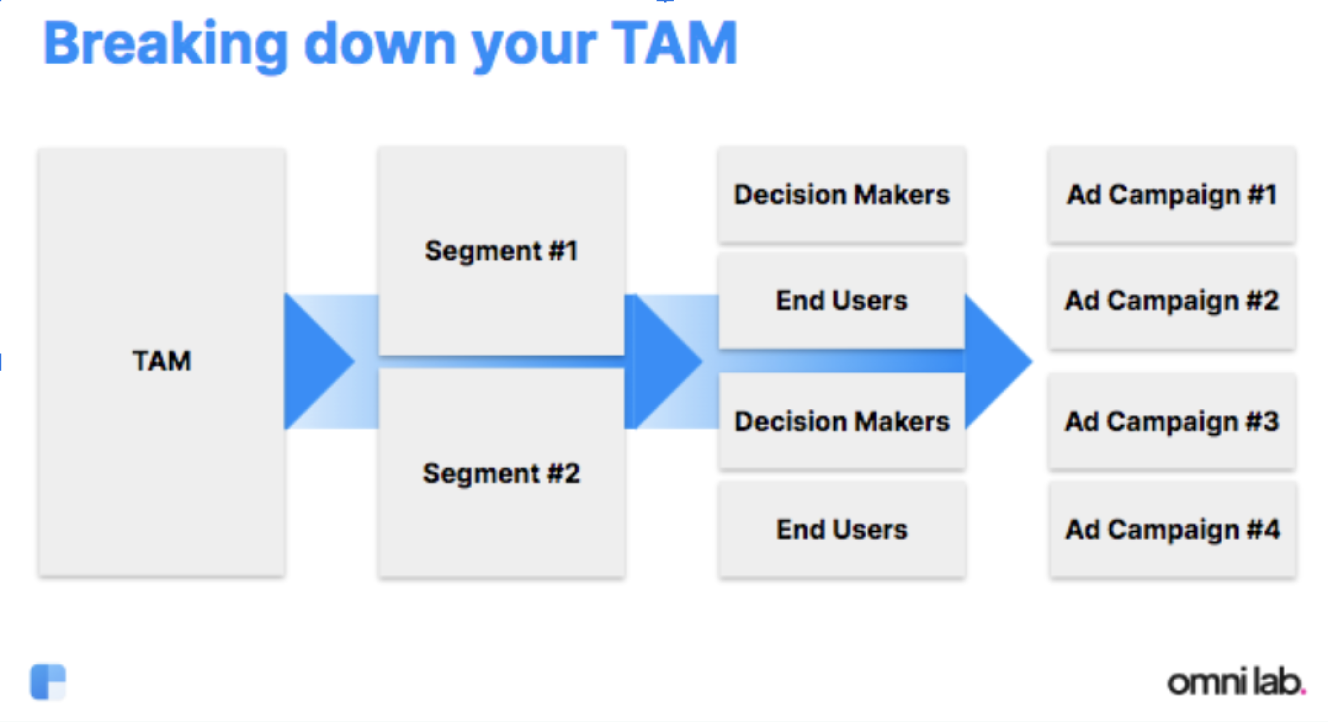
A data activation platform like Clearbit’s can help you deploy different messages to different ICP segments, at each stage of the funnel, creating a more seamless customer experience. Learn how we do this at Clearbit with a real-life example of a demand creation campaign for our HubSpot integration, which was targeted at decision-making segments on Facebook, Instagram, and email.
Tailoring creative & content
Now it’s time to match your creative with the needs and buying behaviors of your ICP segments.
Over 99% of people will never click your ad, and people on social media today are more passive than ever. But all is not lost, because they might stop scrolling long enough to look at your ad, flip through your carousel, or watch a video.
So, adopt the mantra, “no click required.” Offer valuable information in the ad itself. Use ads to tell a story in the viewer’s feed, and to answer their questions, pain points, and jobs to be done.
Here’s a great example from Gong. Instead of an ad that says “download our ebook,” which is often just a product brochure disguised as content, the ad actually pulls samples of real takeaways out of the ebook, and displays them in a carousel. The slides are titled Secret #1 and Secret #2, and each one has an attention-grabbing statistic from Gong’s research.
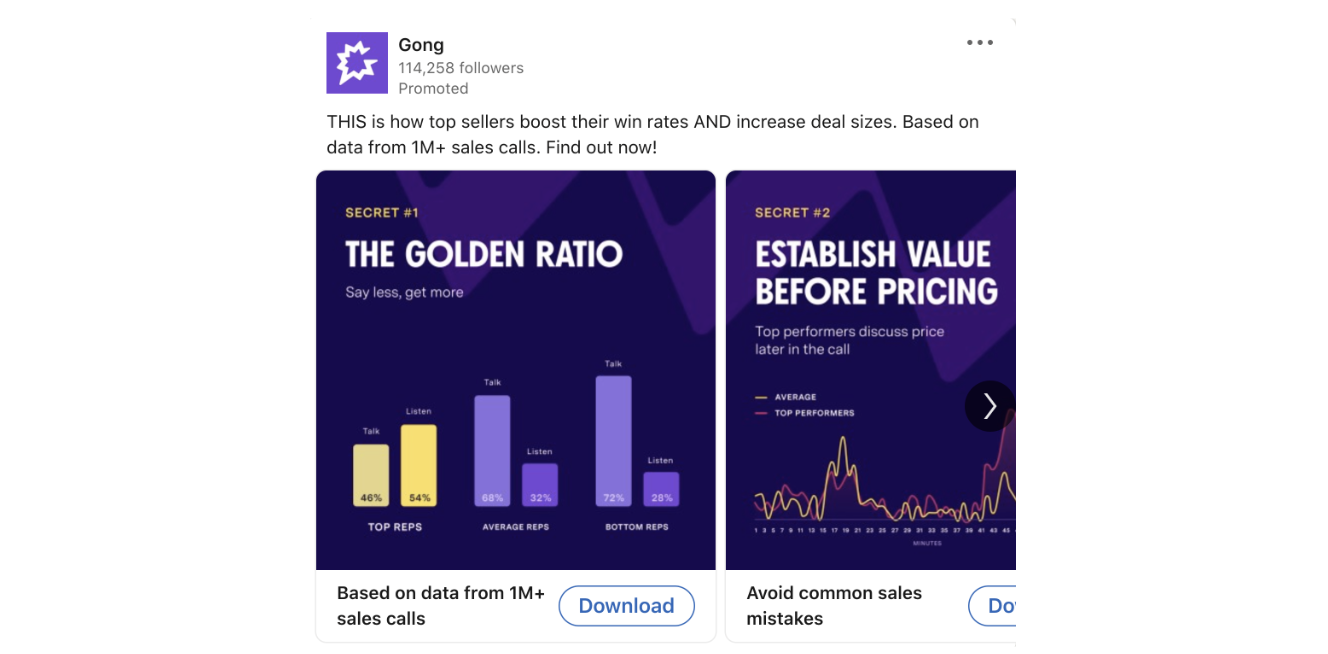
These ads are designed for consumption, not for traditional click conversions — a great adaptation to the fact that people now research products differently than they used to, and traditional lead gen ads don’t convert the same way.
To figure out what your buyers’ questions, problems, and jobs are, try using a content matrix.
A content matrix holds ICP segments in the left column and guides you to brainstorm content topics for each one. Here’s a simple example.
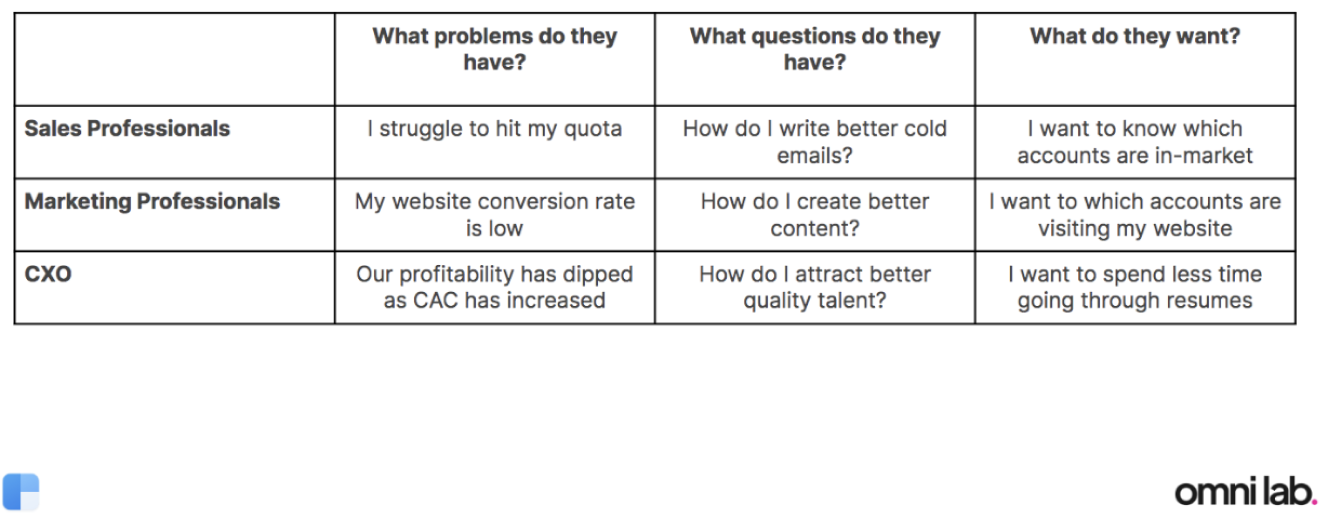
Offer answers to these topics right in the ad itself, no click required.
Pick channels where your audience spends time
Figure out the best channels to reach each of your ICP segments – Facebook, LinkedIn, Reddit, etc. – so that you don’t waste money on channels where they don’t hang out.
The best way to start is to simply spend time in various channels and observe whether people in your ICP are active, and which types of people. Find out what they’re talking about and check how many groups have formed on topics related to your product. You might find, for example, that your “developers” segment is most active on Slack and Reddit, while your “sales ops” segment is most active on LinkedIn and Facebook.
Thanks to the availability of third-party firmographic and technographic data, marketers can reverse-engineer their ICP and segment it to create ad campaigns that show higher ROI — because they match segments’ interests and are more likely to “land.”
This targeting ability is the foundation of keeping CAC and ad costs reasonable as you run demand gen and brand ads – even though users are clicking less often. Because if you adapt your creatives to this new reality, you’ll have plenty of scrolling time to make an impression.
